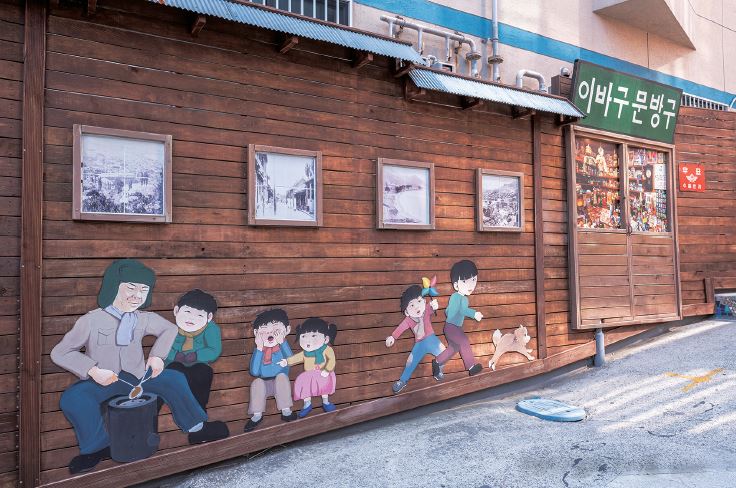 |
| Exhibits on Ibagu-gil. Photo : Gapsu Choi |
Busan is a city of alleys. As refugees flocked in during the Korean War, the city suddenly grew huge, and roads were built wherever possible. The roads in Busan that run along the hills and mountains are narrow, steep, and sometimes reckless, leaving travelers perplexed.
However, sometimes this embarrassment stimulates the curiosity of travelers and gives them pleasure. The series of alleys starting from Busan Station, passing through Choryang-dong, Jungang-dong, Nampo-dong, and Jagalchi Market to Yeongdo is a course where you can experience the true colors of Busan.
A place where the lives of Busan’s common people live
If you leave Busan Station and cross the street, you will reach Chinatown. There are many famous Chinese restaurants such as Shinhwawon, Maga, and Hongseongbang. Some restaurants have delicious dumplings, while others have delicious black bean noodles. Another restaurant is famous for its sweet and sour pork. After passing Chinatown, you will reach Texas Street. After passing the Choryang 2-dong community center on Texas Street, you will reach Choryang Elementary School, and this is where Choryang's 'Ibagu Road' begins. It continues through the old Baekje Hospital, Kim Min-bu Observatory, and all the way to Kakkomak.
Climb the hill along Ibagu Road. You can see houses crowded together on the hill. The small houses are close together and seem to be crouching, shoulder to shoulder. These are the houses where refugees came to live during the Korean War. Workers from the nearby Jagalchi Market, factory workers, and dock workers also flocked. The steps up the road are heavy.
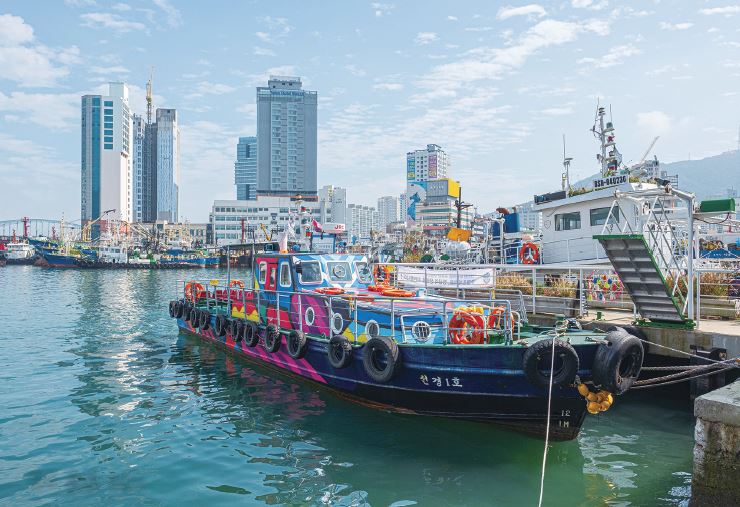 |
| Yeongdo landscape. Photo : Gapsu Choi |
A series of alleys… The true face of Busan
From Busan Station to Jagalchi Market and Yeongdo
Feel the footsteps of history and visit delicious restaurants
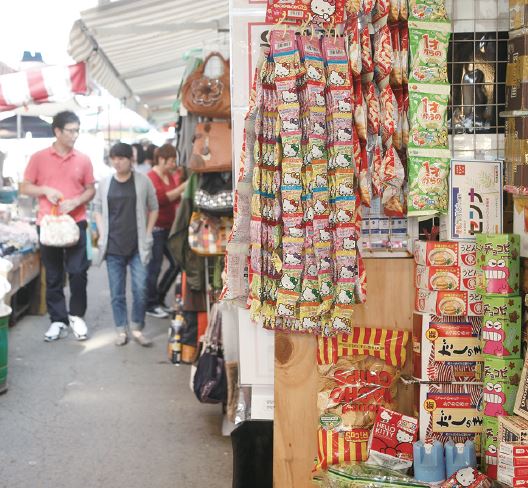 |
| international market. Photo : Gapsu Choi |
The road is narrow enough for two people to barely pass by, shoulder to shoulder. The floor is covered with rough cement. As you walk up the road, your steps stop right in front of the ‘168 stairs’. It's as dangerous as a ladder hanging in the air. People from the mountain village went up and down these stairs several times a day. Adults scooped well water and carried it on their backs, and children ran up and down the stairs to run bean sprouts and tofu errands. In the evening, after finishing their hard work, the heads of families would have a drink and stumble up the stairs.
Next to the 168 stairs is the ‘Kim Min-bu Observatory’. Minbu Kim is a poet born in Busan. He died young at the young age of 31. His poetry was outstanding, but because he left the world too early, few people remember him. On one wall of the observatory, 'Waiting Heart', a song included in a high school music textbook and lyrics written by Minbu Kim, is engraved. There are many unique stores around the mountain, such as ‘Ibagu Playground’, ‘6·25 Makgeolli’, and toy stores. From here, you can see Busan Port so close you can touch it.
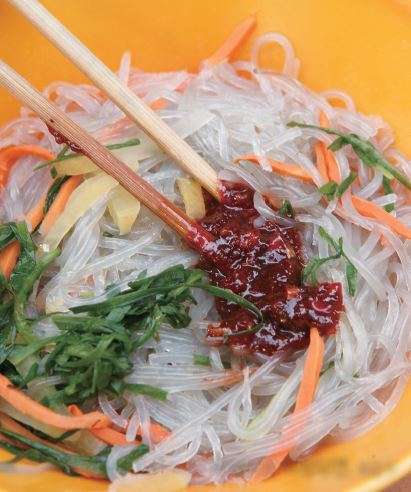 |
| Bibim Dangmyeon at Gukje Market. Photo : Gapsu Choi |
A fun-filled market tour
If you go down Ibagu-gil, it passes through Jungang-dong and leads to Nampo-dong and Gukje Market. Gukje Market originally refers to a complex consisting of a two-story building and a total of six facilities, but the nearby Sinchang Market, Changseon Market, and Bupyeong Market are generally referred to as Gukje Market. If I had to compare it, it resembles Namdaemun Market in Seoul. Shops selling shoes, bags, glasses, jewelry, etc. are intertwined like a maze along the narrow streets.
It's fun to look at the various products at Gukje Market, but the highlight is finding delicious restaurants hidden in every nook and cranny. Inexpensive and delicious street food welcomes you in every alley. It is difficult to list them all, including fish cakes, bibim vermicelli, Chungmu kimbap, banquet noodles, green onion pancakes, sundae, sikhye, tofu sushi, and millet kkumi.
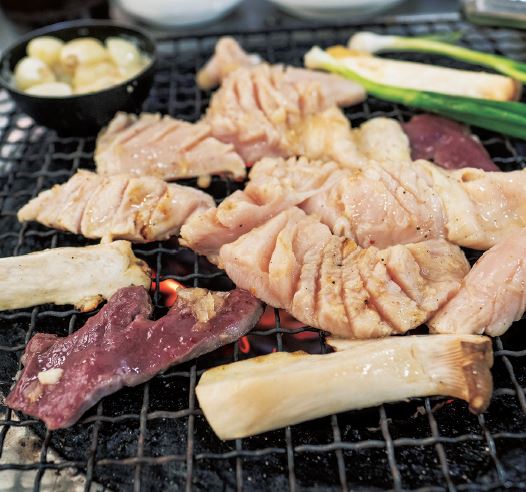 |
| Grilled lamb tripe. Photo : Gapsu Choi |
Across the street from Nampo-dong is Jagalchi Market. It is the largest seafood market in Korea. It is said that 30-50% of Korea's marine products and dried fish are supplied here. When you enter the market, street vendors are lined up, and there is no end in sight. There are various types of fish, including whale meat, on the stalls. The streets, filled with the unique scent of the sea, are crowded with visitors.
I'm hungry so I go to a grilled fish restaurant. Order the mackerel set meal. Six or seven side dishes, two pieces of mackerel, and gobong rice are served on an ‘obong (tray)’. This is a restaurant for sailors who came to Jagalchi. Open from 3 am. The mackerel is fresher and more delicious. There is no fishy smell.
Meet Old Busan
If you cross Jagalchi Market, you will reach Yeongdo. It is called ‘Old’ Busan. When you go to Yeongdo, the atmosphere is noticeably different from Haeundae, Gwangalli, Nampo-dong, and Seomyeon. When it comes to Seoul, it feels like Jongno. It feels a little old, but in modern terms, it's vintage and retro.
When you think of Yeongdo, Yeongdo Bridge comes to mind. It is the only bridge in Korea that is raised and lowered. Even now, we do bridge crossings. The village in front of Yeongdo Bridge is called Kangkangi Art Village. It is a neighborhood built around an old ferry dock, and it is also where the shipbuilding industry began with the opening of Korea's first modern shipyard in 1912 during the Japanese colonial period. The reason it is called ‘kangkang’ is because of the sound of the hammer. To repair a ship, shells and foreign substances stuck to the bottom of the ship must be removed and rust removed. It is said that the sound of hammers doing this work filled the neighborhood all day long. There are still 12 shipbuilding companies in operation.
The village declined in the 2000s as the shipbuilding industry declined, but with the establishment of various cultural facilities, including a ship experience center, people began to visit again. As you walk around the village, you will find many places to visit, including galleries, museums, and workshops.
There are 33 works of art installed throughout the Kangkangi Art Village through the ‘Public Art Project’. The location of the works of art is detailed in the leaflet distributed at the information center located at the entrance to the village. As you follow these works one by one, you will understand the history of Kangkangi Art Village little by little. Cloud-shaped streetlights and full-color murals are perfect as a background for a 'shot of a lifetime'.